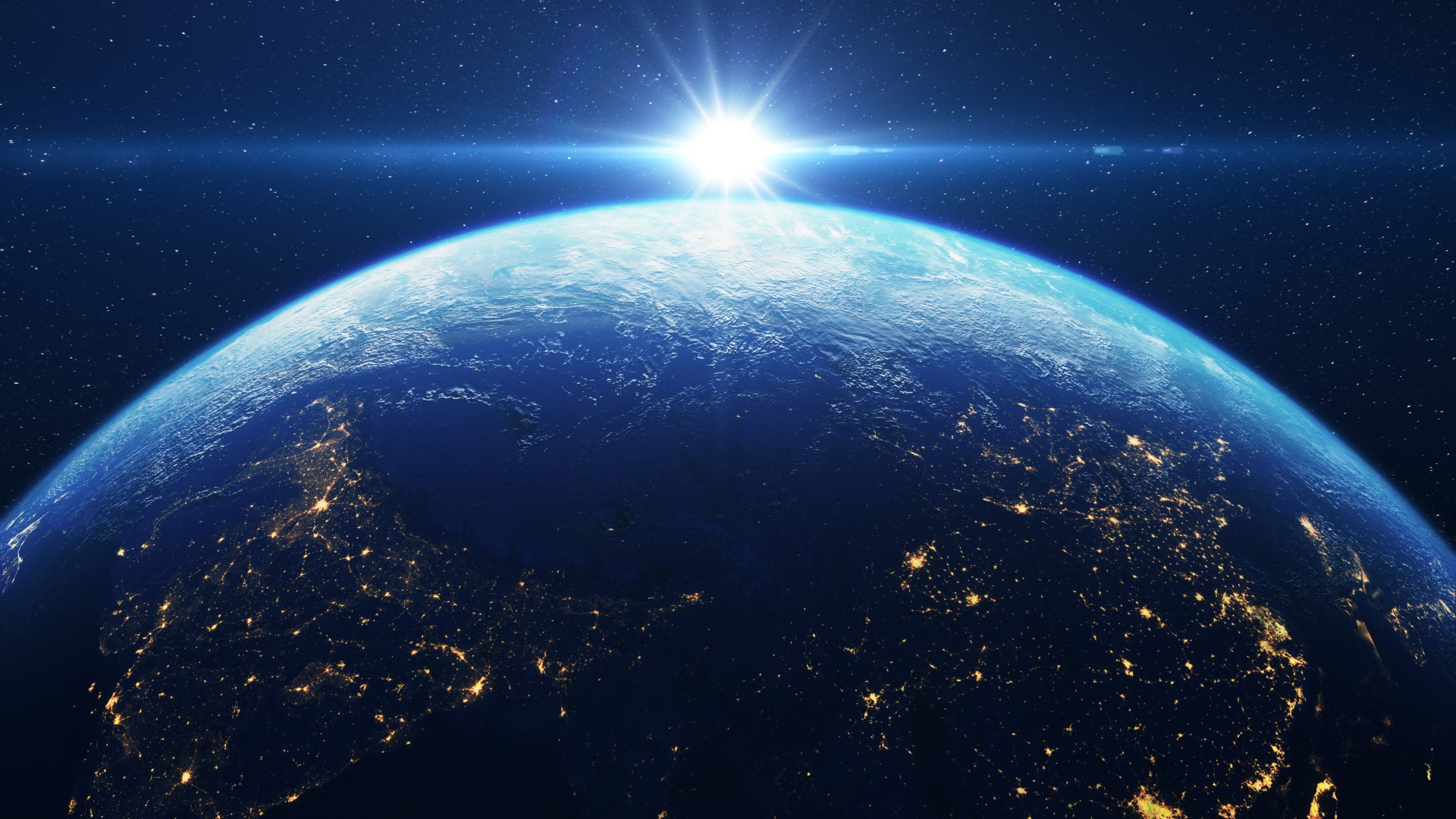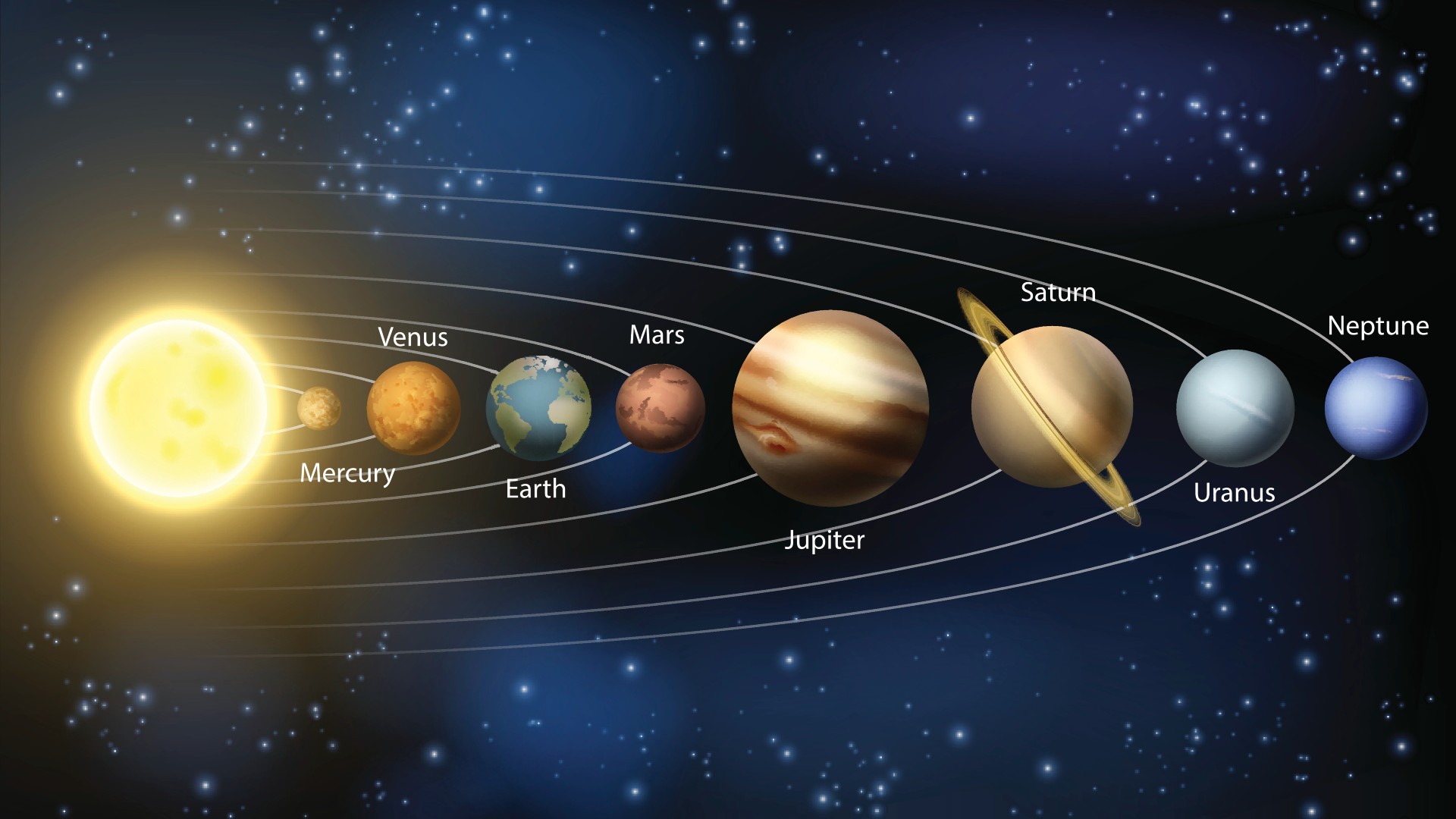
Is Earth getting closer to the sun, or farther away?
And will this change in distance affect our planet's climate?

The sun moves in such a predictable way across the sky that you might never suspect that its relationship with Earth is changing all the time. In fact, the average distance between Earth and the sun is not static year over year. So do we know if Earth is getting closer to or farther from the sun? And what forces are acting on our planet and our star to make this happen?
In short, the sun is getting farther away from Earth over time. On average, Earth is about 93 million miles (150 million kilometers) from the sun, according to NASA. However, its orbit is not perfectly circular; it's slightly elliptical, or oval-shaped. This means Earth's distance from the sun can range from about 91.4 million to 94.5 million miles (147.1 million to 152.1 million km), NASA says.
Still, on average, the expanse between Earth and the sun is slowly increasing over time. This growing distance has two major causes. One is that the sun is losing mass. The other involves the same forces that cause tides on Earth.
Related: When will the sun explode?
The sun is shrinking
The nuclear fusion reactions that power the sun convert mass to energy, following Einstein's famous equation E = mc^2. Because the sun is constantly producing energy, it's also steadily losing mass. Over the course of the sun's remaining lifetime — estimated at another 5 billion years or so, according to NASA — models of how stars evolve over time predict the sun will lose about 0.1% of its total mass before it begins to die, Brian DiGiorgio, an astronomer at the University of California, Santa Cruz, told Live Science in an email.
Although 0.1% may not sound like a lot, "this is a lot of mass," DiGiorgio said. "It's about the same amount of mass as Jupiter." Jupiter, in turn, is about 318 times Earth's mass, according to the Exploratorium in California.
The strength of an object's gravitational pull is proportional to how much mass it has. Because the sun is losing mass, its pull on Earth is weakening, leading our planet to drift away from our star by about 2.36 inches (6 centimeters) per year, DiGiorgio said. But we shouldn't throw the sun a bon voyage party just yet.
Sign up for the Live Science daily newsletter now
Get the world’s most fascinating discoveries delivered straight to your inbox.
"This is pretty negligible, especially compared to the normal variation in Earth's orbital distance that happens because of its slightly elliptical orbit — about 3%," DiGiorgio said.
The effects of tides
Just as the moon's gravitational pull results in tides on Earth, so does Earth's gravity tug on the sun. This stretches the side of the sun that faces Earth, resulting in a "tidal bulge," Britt Scharringhausen, an associate professor of physics and astronomy at Beloit College in Wisconsin, wrote for Cornell University's Ask an Astronomer page.
The sun rotates on its axis about once every 27 days, according to NASA. Because this is faster than the 365 or so days it takes for Earth to complete an orbit around the sun, the tidal bulge Earth generates on the sun sits ahead of Earth. The bulge's mass has a gravitational pull associated with it, tugging Earth ahead on its orbit and slinging it farther from the sun, Scharringhausen noted. (A similar effect is leading Earth's moon to slowly drift away from our planet.)
However, these tidal forces have a very weak effect on Earth's orbit: They cause Earth to move about 0.0001 inch (0.0003 cm) away from the sun every year, DiGiorgio calculated.
Any major change in climate?
Might Earth's growing distance from the sun influence Earth's climate?
"As the Earth moves away from the sun, the sun's light will become dimmer," DiGiorgio said. Given that Earth's distance from the sun may grow by 0.2% over the next 5 billion years, "this dimming corresponds to a 0.4% reduction of solar energy hitting the Earth's surface," he said. "This is relatively small compared to the normal variations in the sun's brightness that happen due to the Earth's elliptical orbit, so it's not much to worry about."
Related: What's the maximum number of planets that could orbit the sun?
The bigger thing to worry about "is that as the sun evolves over the next 5 billion years, stellar evolution models predict that it will increase in brightness by about 6% every 1 billion years, slowly increasing Earth's temperatures and boiling off the oceans," DiGiorgio said. "This will render the Earth uninhabitable to humans long before the sun ever potentially swallows it."
Rogue influence
Recent work suggests the orbits of Jupiter and other planets in the solar system have changed over time. So could their orbits grow unstable enough to one day influence Earth's orbit, hurling it closer to or farther from the sun? Or might some other rogue body pass close enough to the solar system to have a similar effect?
"The problem with trying to predict the gravitational interactions of many-body systems like the solar system or nearby stars is that they're chaotic, meaning they're impossible to predict with any certainty," DiGiorgio said. "We have no idea where, specifically, the planets will be on timescales longer than around 100 million years because the tiny errors in measurement and perturbations from unmodeled interactions grow too large over time."
Still, "we can use this chaos to our advantage by running many simulations of the same chaotic system to see what the probability of an event occurring is," DiGiorgio said. This is similar to how predictive weather models work, he noted.

A 2009 study in the journal Nature that performed about 2,500 simulations of the solar system found that in about 1% of them, Mercury's orbit became unstable, causing it to crash into either the sun or Venus. "So it is theoretically possible for Mercury to move by the Earth and change its orbit substantially, as it did to Mars in one simulation," DiGiorgio said. "This is very unlikely, though, as seen by its rarity in their simulations."
It is also very unlikely that a passing star, planet or other body may perturb Earth's orbit, DiGiorgio said. "My back-of-the-envelope calculations say that we should only expect a star to come closer than the orbit of Pluto about once every trillion years," DiGiorgio said. "Any comets already in our solar system won't have enough mass or energy to affect our orbit substantially either."
The sun's death
In about 5 billion years, after the sun exhausts its hydrogen fuel, it will begin to bloat, becoming a red giant star. Assuming Earth continues uninterrupted on its course, will it have grown far enough away from the dying sun to survive our star's death throes?
There is currently some disagreement about how much the sun will swell during its red giant phase, DiGiorgio said. There is a chance it will not puff out enough to reach Earth, meaning our planet may survive and continue to orbit. However, most estimates suggest the sun will grow enough to swallow Earth, leading the planet to spiral "inwards towards oblivion," DiGiorgio said.
"However, even if the Earth survives, there is no chance that humans would be able to survive with it," DiGiorgio said. "The heat and radiation from the encroaching sun would not only boil the oceans and atmosphere, but it would probably boil the Earth itself. Humans would have to leave the flaming lava ball long before it even got swallowed."
If humans are still around 5 billion years from now and wanted Earth to remain habitable during the sun's expansion, we would have to slowly move the planet outward to around the orbit of Saturn, keeping it temperate enough for life as we know it as the sun continued to output more and more energy.
"This is pretty impractical, though," DiGiorgio said. "The easier solution would be to just abandon Earth and find another planet or solar system to live in."
Originally published on Live Science.










